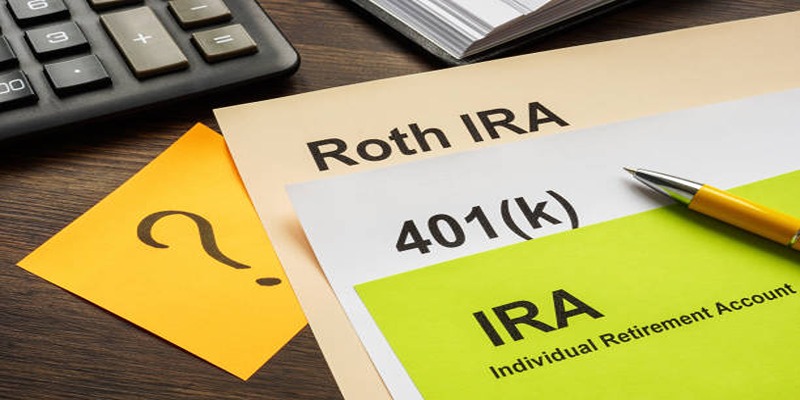Starting Your Retirement Journey: How to Open an IRA
Planning for retirement is an important step toward securing your future financial well-being. One effective way to save for retirement is by opening an Individual Retirement Account (IRA). An IRA helps you grow your money over time with tax advantages, making it easier to reach your retirement goals. Whether you're new to saving or looking to expand your options, opening an IRA is simple and flexible. In this guide, we'll walk you through the basics to help you get started on building a secure retirement.
What is an IRA?

An Individual Retirement Account (IRA) is a specialized savings account designed to help you invest for retirement while minimizing taxes. Typically managed by certified financial institutions such as banks or brokerage firms, IRAs provide a straightforward way to grow your savings over time. There are two primary types of IRAs: Traditional and Roth, each offering unique benefits to suit different financial goals.
Traditional IRA
A Traditional IRA lets you contribute tax-advantaged dollars during the year and the contribution may also be tax-deductible. A Traditional IRA is also a retirement savings account that allows the money to grow, and the investors are not taxed until they withdraw their money in their old age. It implies that you will not be charged any taxes on the profits until they are cashed out, which means you can earn your money faster.
Roth IRA
A Roth IRA, for instance, lets you invest using what you earn from your income after paying federal income tax and then withdraw the money you have saved tax-free when you are retired. This means that you won't owe any taxes on the earnings when you withdraw them, giving you more flexibility in managing your tax burden during retirement.
Choosing the Right IRA for You
Before opening an IRA, it's important to consider which type is best for your individual financial situation. Here are some key factors to keep in mind:
- Tax Benefits: If you're looking for immediate tax benefits, a Traditional IRA may be the better option as contributions are tax-deductible.
- Income Level: Both Traditional and Roth IRAs have income limits that determine eligibility for contribution. For example, if you earn too much, you may not be able to contribute to a Roth IRA.
- Withdrawal Rules: With a Traditional IRA, there are penalties for early withdrawals before age 59 ½. However, with a Roth IRA, you can withdraw contributions at any time without penalty.
- Retirement Goals: Consider your retirement plans and goals to determine which IRA is best for you. If you anticipate being in a higher tax bracket during retirement, a Roth IRA may be more beneficial as you won't owe taxes on withdrawals.
How to Open an IRA
Now that you have a better understanding of IRAs, here are the steps to open one:
1. Choose a Financial Institution
You can open an IRA with a variety of financial institutions, including banks, credit unions, and brokerage firms. Consider factors like fees, investment options, customer service, and reputation when selecting the institution.
2. Gather Required Documents
To open an IRA, you will typically need to provide personal identification information such as your social security number and driver's license. You may also need to provide proof of income or residency depending on the financial institution's requirements.
3. Select Your Investments
Once your account is opened, you'll need to choose how you want to invest your money within the IRA. This could include stocks, bonds, mutual funds, and more. Consider your risk tolerance and retirement goals when selecting your investments.
4. Set Up Contributions
You can contribute to your IRA in multiple ways, including automatic monthly transfers from a bank account or manual contributions. Determine how much you want to contribute each month and set up the appropriate method for your needs.
5. Choose your investments
It's important to regularly review and adjust your investments within the IRA to ensure they align with your goals and risk tolerance. Consider consulting a financial advisor for guidance on managing your investments.
Common IRA Rules and Contribution Limits

To keep your IRA in good standing and avoid penalties, it's important to understand the rules and contribution limits associated with IRAs. Here are a few key points to keep in mind:
- Contribution Limits: For 2024, the maximum contribution limit for both Traditional and Roth IRAs is $6,000 ($7,000 if you're over 50 years old). These limits may change each year.
- Rollovers and Transfers: You can transfer or roll over funds from one IRA to another without penalty as long as it is done within 60 days.
- Required Minimum Distributions (RMDs): Starting at age 72 (or 70 ½ if you turned 70 ½ in 2019 or earlier), you are required to withdraw a minimum amount from your Traditional IRA each year. This is known as an RMD.
- Early Withdrawal Penalties: If you withdraw money from your IRA before age 59 ½, you may be subject to early withdrawal penalties and taxes.
IRA Fees and Charges
While IRAs offer tax advantages and the potential for growth, there may be fees associated with managing your account. These could include:
- Account Maintenance Fees: Some financial institutions may charge a fee to maintain your IRA account.
- Transaction Fees: Depending on the investments you choose, there may be transaction fees when buying or selling assets within your IRA.
- Investment Management Fees: If you have a financial advisor managing your investments, they may charge a fee for their services.
Make sure to carefully review any fees associated with your IRA before opening an account to determine if it is the best option for you.
Conclusion
Opening an IRA is an important step towards securing your retirement goals. With the potential for tax advantages and growth, it's important to carefully consider which type of IRA is best for your individual needs. Be sure to do your research and consult with a financial advisor before making any decisions. And remember, it's never too early or too late to start saving for retirement! So start today and take advantage of the benefits an IRA can offer.











